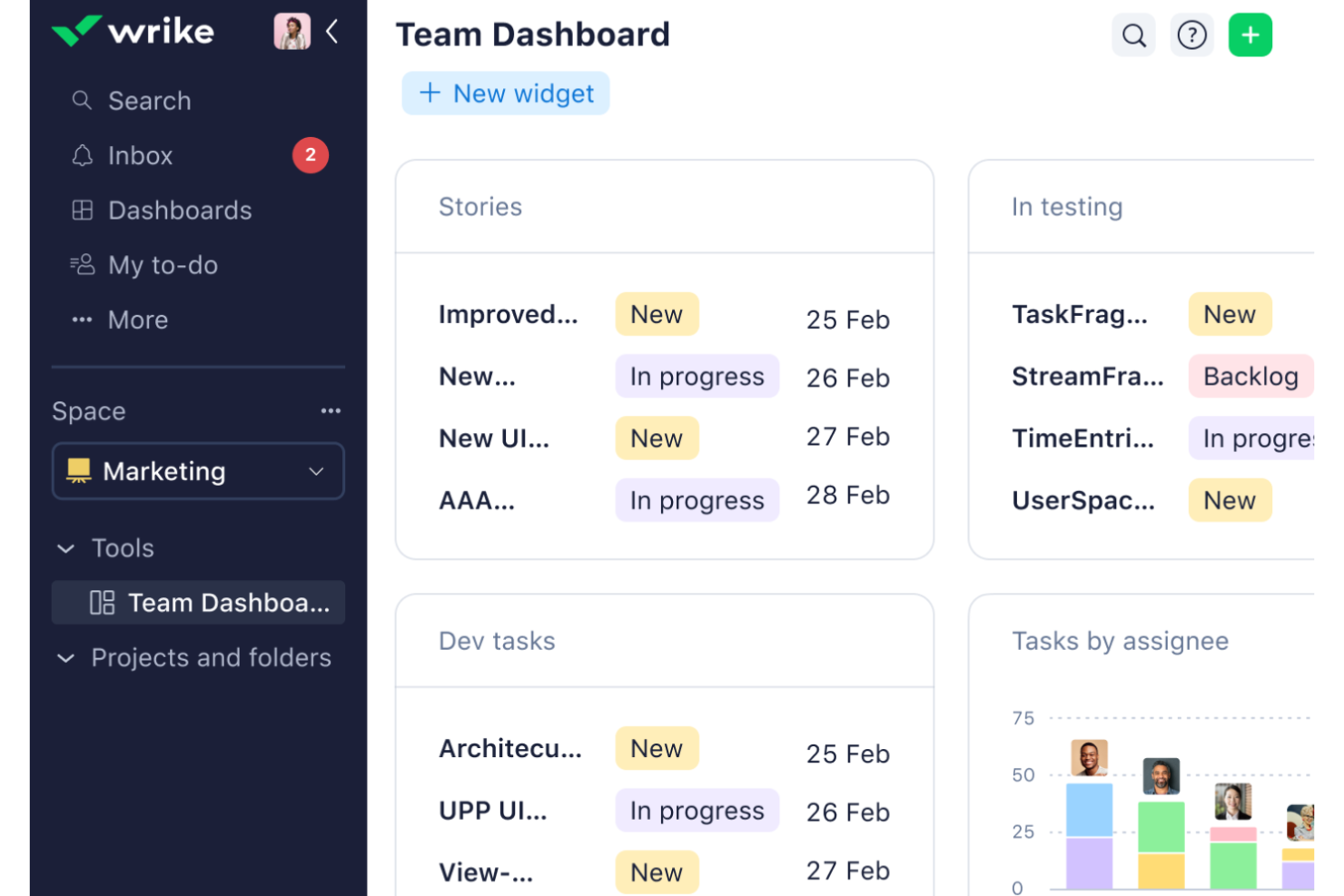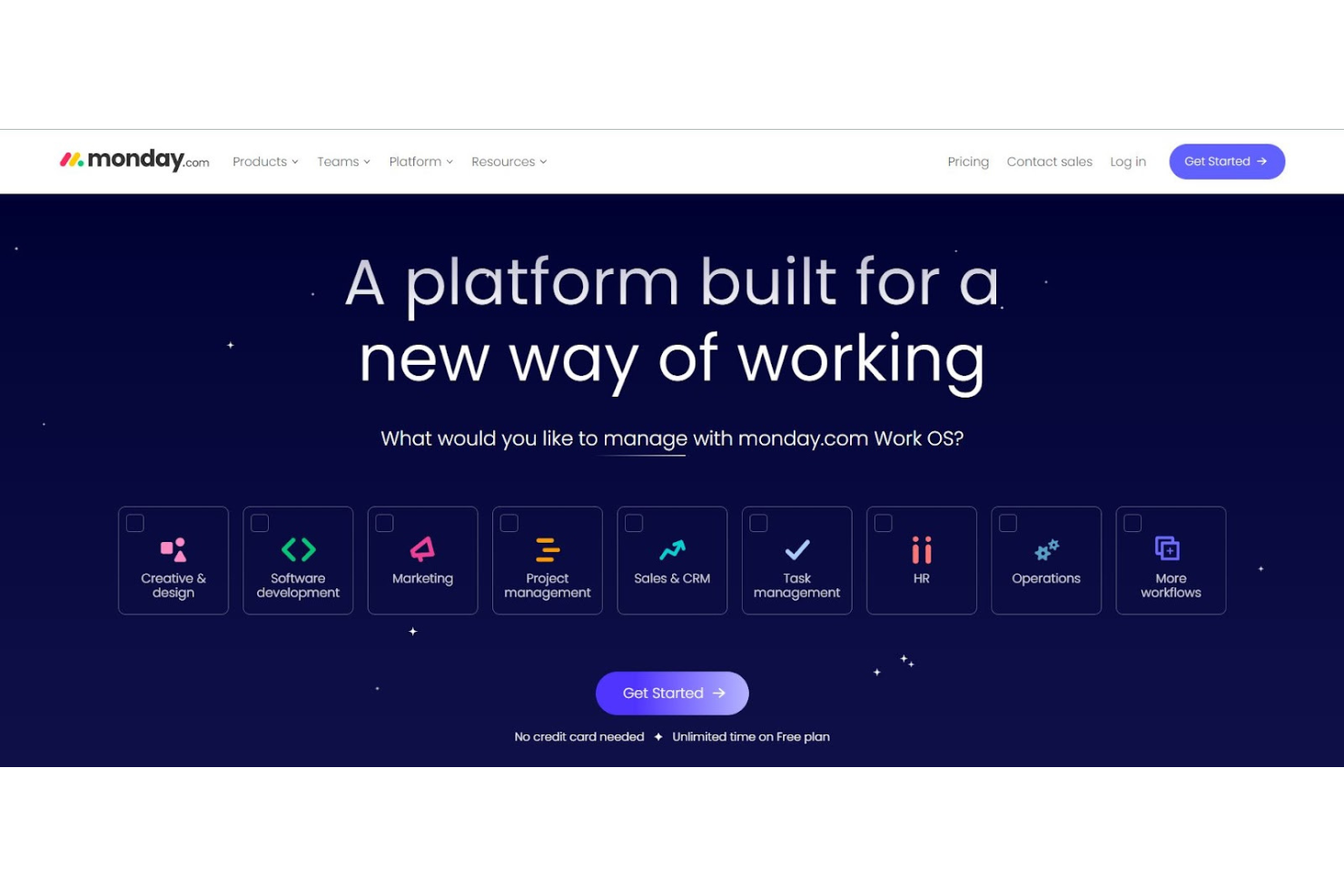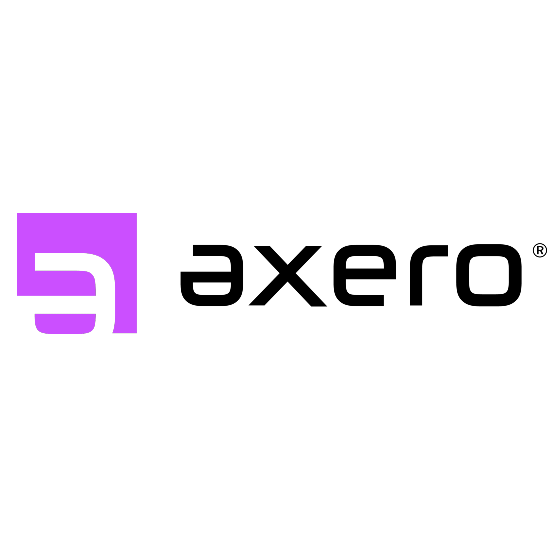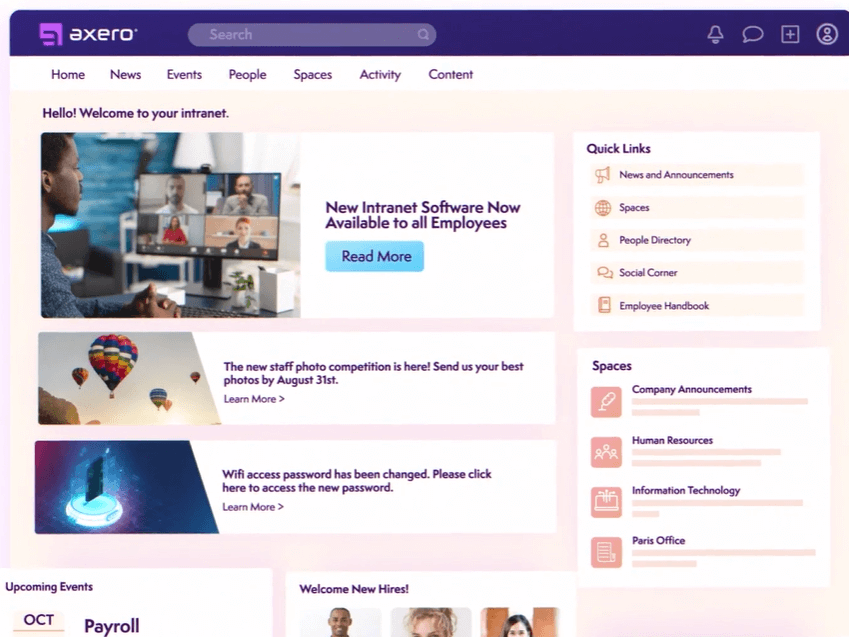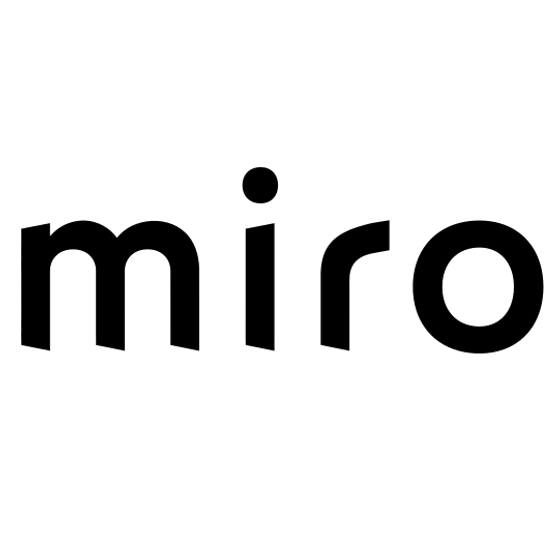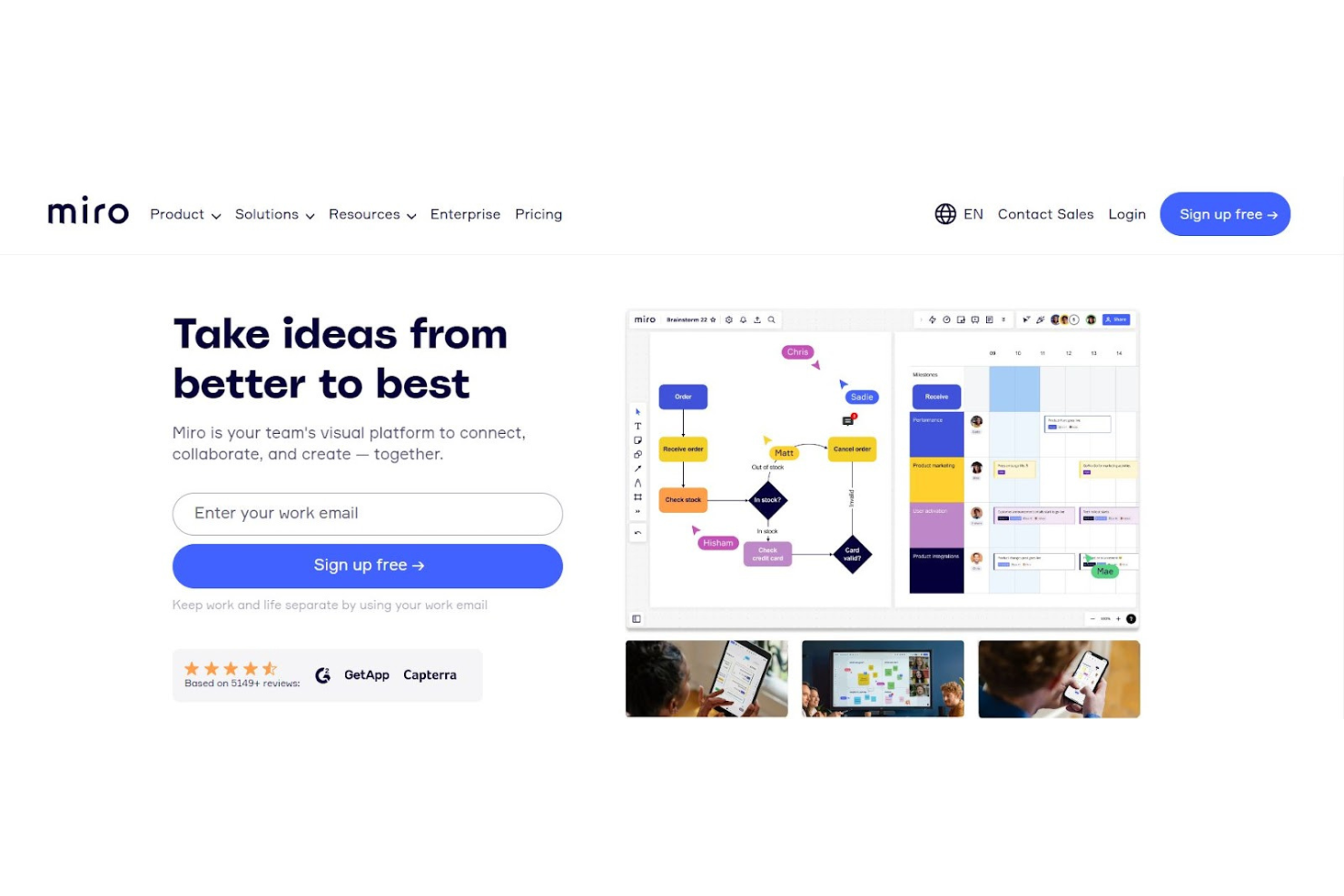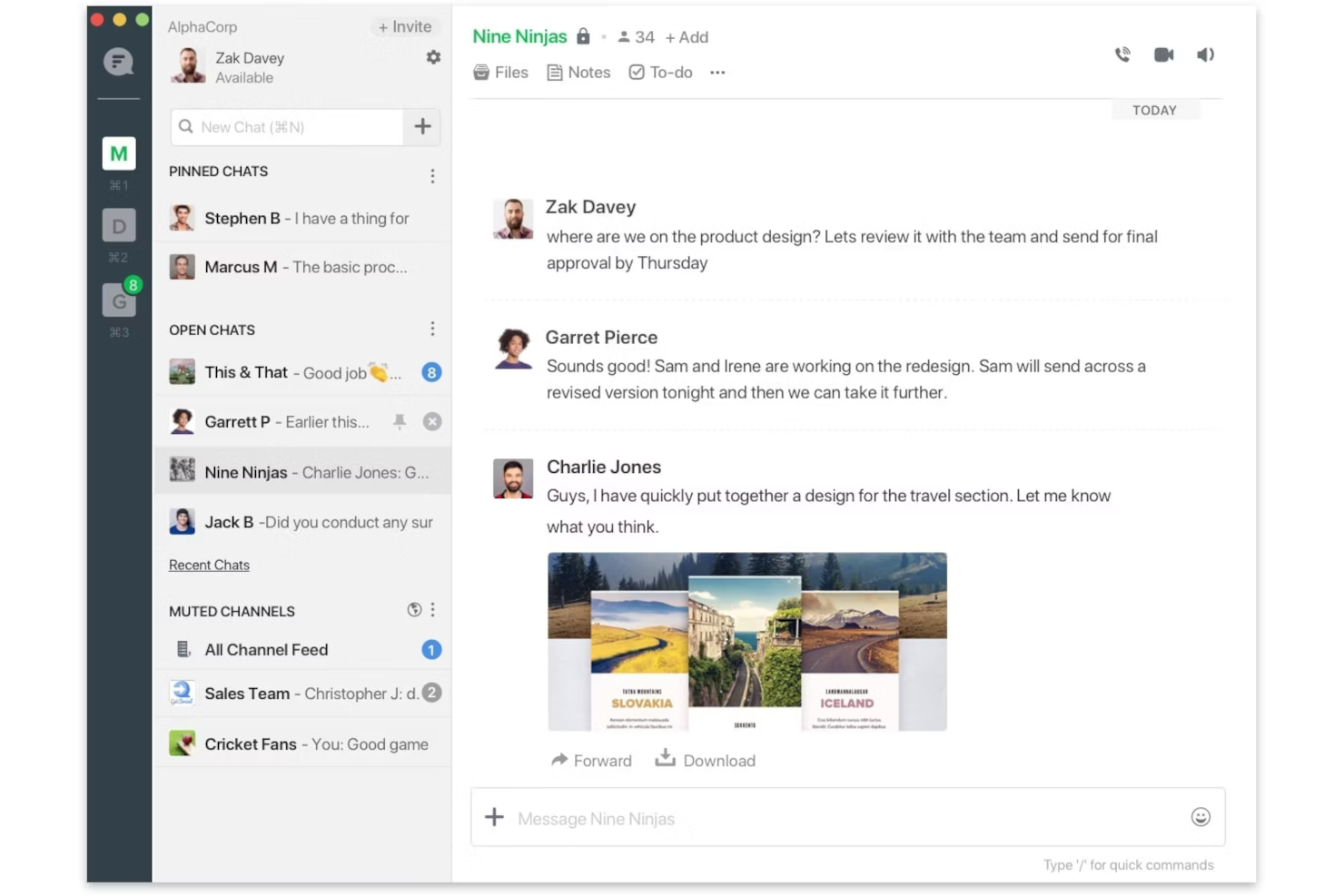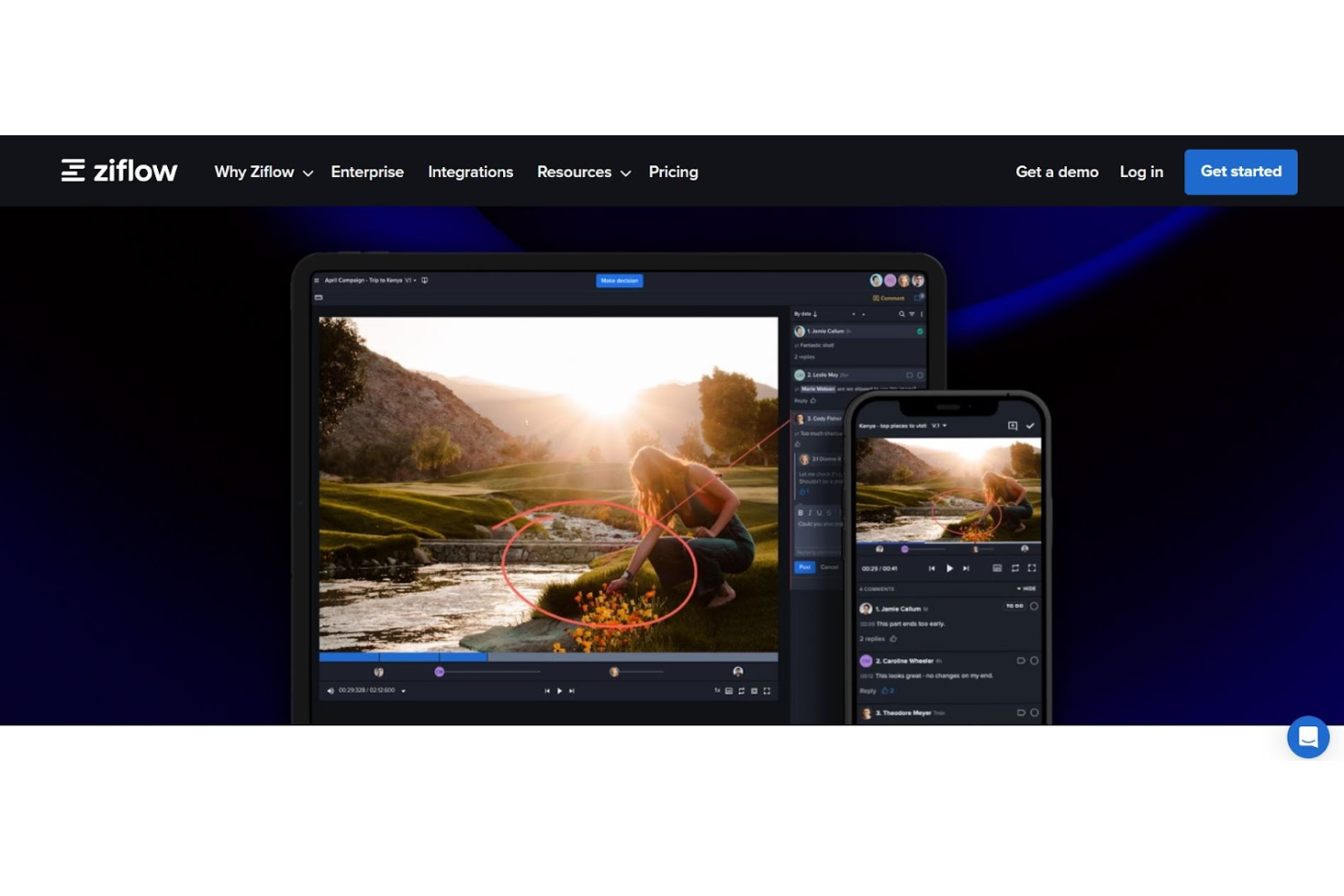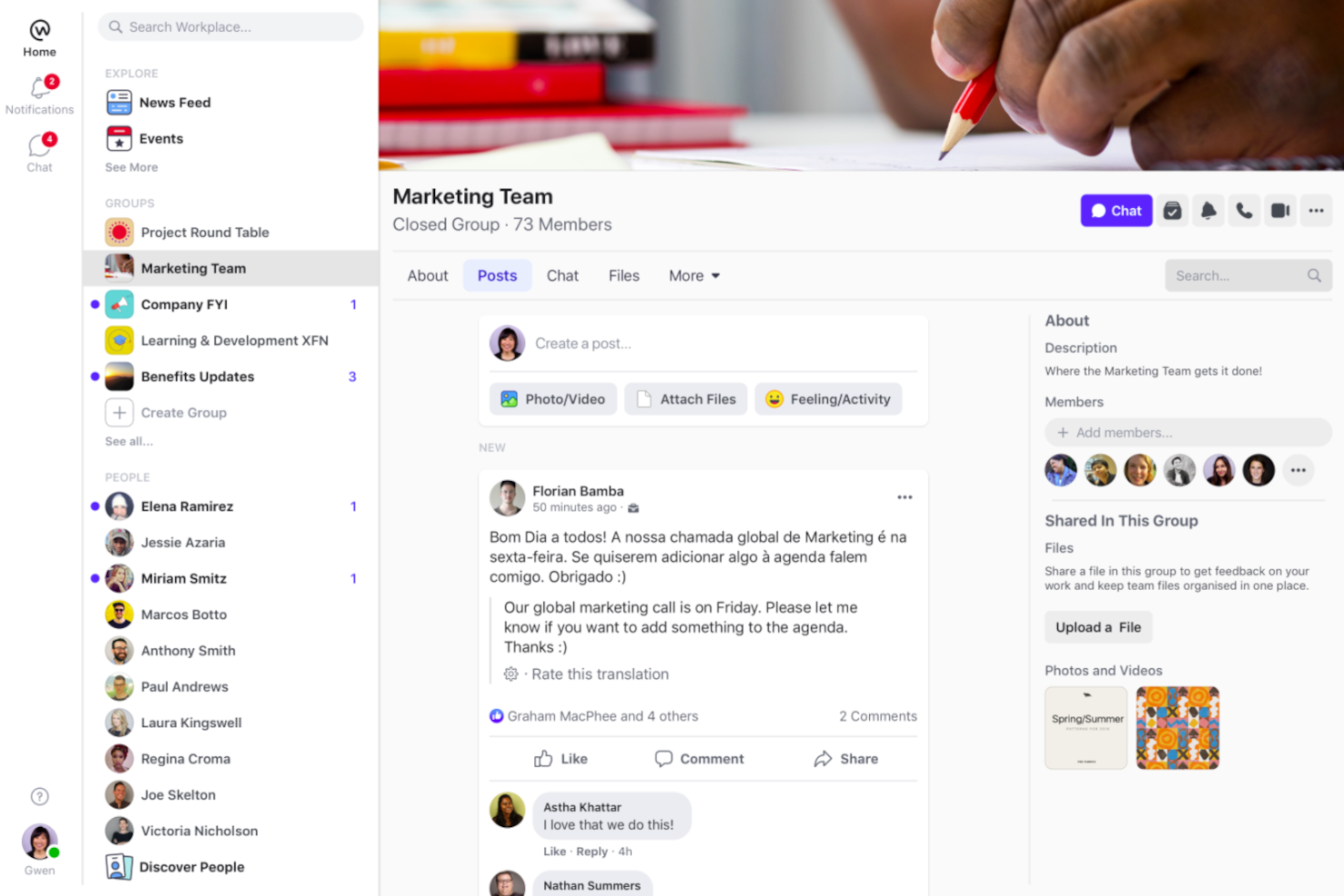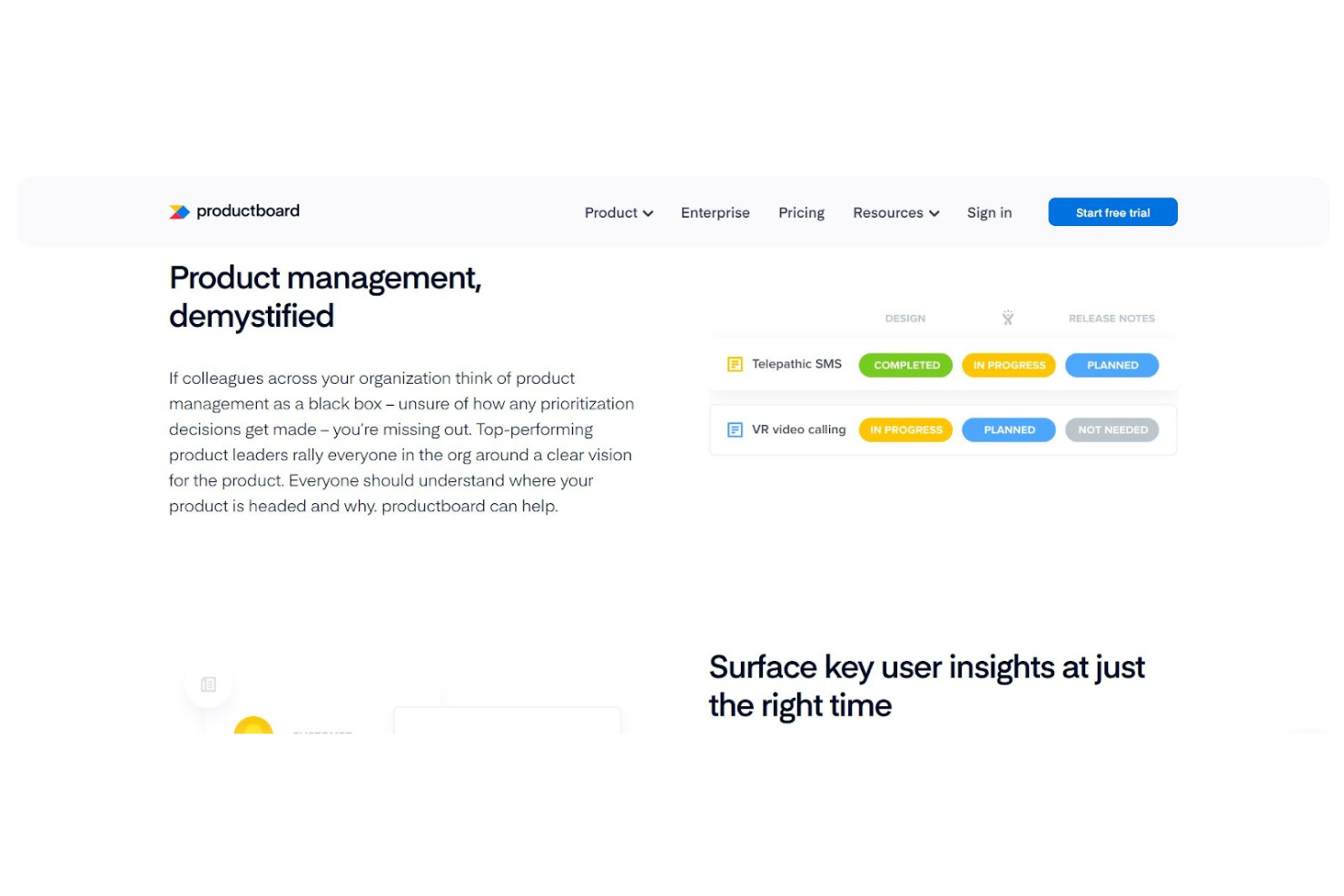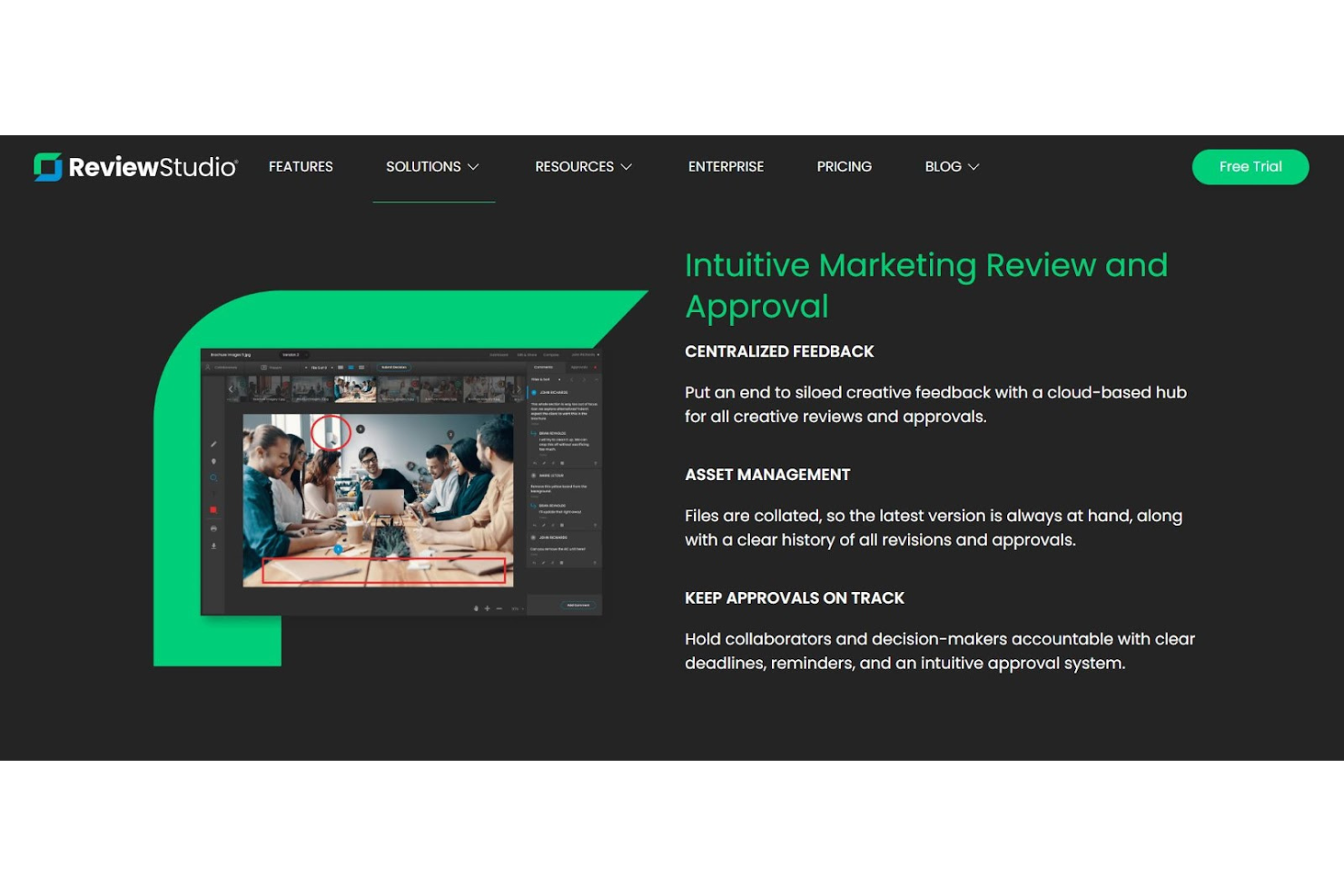10 Best Collaboration Software Shortlist
Here's my pick of the 10 best software from the 20 tools reviewed.
With so many different collaboration software solutions available, figuring out which is right for you is tough. You know you want to streamline and enhance the way your teams communicate and work together, but need to figure out which tool is best. I've got you! In this post I'll help make your choice easy, sharing my personal experiences using dozens of different collaboration tools with large teams and projects, with my picks of the best collaboration software.
Why Trust Our Collaboration Software Reviews
We’ve been testing and reviewing collaboration software since 2012. As project managers ourselves, we know how critical and difficult it is to make the right decision when selecting software.
We invest in deep research to help our audience make better software purchasing decisions. We’ve tested more than 2,000 tools for different Project Management use cases and written over 1,000 comprehensive software reviews. Learn how we stay transparent & our collaboration software review methodology.
Best Collaboration Software Comparison Chart
Here’s a convenient table that contains all the details you need to compare these options side by side.
| Tools | Price | |
|---|---|---|
| Wrike | From $9.80/user/month | Website |
| monday.com | From $8/user/month (billed annually, min 3 seats) | Website |
| Axero | From $2,000/month for up to 200 users | Website |
| Miro | From $10/user/month | Website |
| Flock | From $6/user/month | Website |
| Avaza | Plans start at $11.95/month | Website |
| Ziflow | From $40/user/month | Website |
| Workplace from Meta | From $4/user/month | Website |
| Productboard | From $20/user/month (billed annually) | Website |
| ReviewStudio | The Pro Plan starts at $20/user/month (billed annually) | Website |

Compare Software Specs Side by Side
Use our comparison chart to review and evaluate software specs side-by-side.
Compare SoftwareHow To Choose Collaboration Software
With so many different collaboration software solutions available, it can be challenging to make decisions on what collaboration software is going to be the best fit for your needs.
As you're shortlisting, trialing, and selecting collaboration software consider the following:
- What problem are you trying to solve - Start by identifying the collaboration software feature gap you're trying to fill to clarify the features and functionality the collaboration software needs to provide.
- Who will need to use it - To evaluate cost and requirements, consider who'll be using the software and how many licenses you'll need. You'll need to evaluate if it'll just be the project team, or the whole organization that will require access. When that's clear, it's worth considering if you're prioritizing ease of use for all, or speed for your collaboration software power users.
- What other tools it needs to work with - Clarify what tools you're replacing, what tools are staying, and the tools you'll need to integrate with, such as accounting, CRM or HR software. You'll need to decide if the tools will need to integrate together, or alternatively, if you can replace multiple tools with one consolidated collaboration software.
- What outcomes are important - Consider the result that the software needs to deliver to be considered a success. Consider what capability you want to gain, or what you want to improve, and how you will be measuring success. For example, an outcome could be the ability to get greater visibility into performance. You could compare collaboration software features until you’re blue in the face but if you aren’t thinking about the outcomes you want to drive, you could be wasting a lot of valuable time.
- How it would work within your organization - Consider the software selection alongside your workflows and delivery methodology. Evaluate what's working well, and the areas that are causing issues that need to be addressed. Remember every business is different — don’t assume that because a tool is popular that it'll work in your organization.
Best Collaboration Software Reviews
You can use these simple overviews of each tool below to understand why I chose these options and how they stand out from other collaboration software.
Wrike is a comprehensive work management platform that offers a wide range of features and integrations. With its focus on project management, workflow management, task management, and resource management, Wrike offers a versatile collaborative platform that caters to various teams and industries.
Why I picked Wrike: Its standout features include real-time collaboration tools, like task updates, file sharing, and in-platform comments. It also has a wide array of customizable options that support different workflows. With its shared dashboards and interactive Gantt charts, Wrike offers comprehensive visibility into project timelines and tasks, enabling teams to align on goals, monitor progress, and efficiently allocate resources.
Overall, Wrike excels as a versatile project management tool because it not only supports seamless communication and task management but also offers advanced reporting and resource allocation features, which are essential for managing complex projects effectively.
Wrike Standout Features and Integrations
Features include Gantt charts, automation, project resource planning, Kanban boards, approvals, custom item types, proofing, cross-tagging, custom dashboards, and dynamic request forms.
Integrations include Amazon S3, Google Drive, Slack, BambooHR, Gmail, ADP Workforce Now, Bitbucket, Cisco, Expensify, DocuSign, Stripe, Zendesk, and over 400 more.
Pros and cons
Pros:
- Wide range of project management features
- Robust integration capabilities
- Extensive customization options
Cons:
- Steeper price for more advanced features or larger teams
- Learning curve for new users
At its core, monday.com allows you to generate team collaboration in any department. Whether you’re trying to improve teamwork in HR, marketing, or sales, this cloud-based Work OS is here to help. Shape your process for any project code-free in a way that adapts to the shifting needs of any project. Managers can easily see the big picture, while team members at every level can access data, docs, and templates at will.
Some of the features that guaranteed this collaboration software a place on this list include the time tracking tools that help you meet deadlines, automation that relieves your team from manual work, and integrations with all the most popular tools and apps.
You’ll find that monday.com has solutions segmented by company size and team type so you can develop a package that works specifically for your needs. With an agile collaboration platform like this, you can easily scale your operations as your business grows.
monday.com Standout Features and Integrations
Features include 360-degree feedback, activity dashboard, asset sharing, collaborative development, commenting and notes, commission management, contractor database, due date tracking, event calendar, historical reporting, and idea management.
Integrations include G Suite, Google Drive, Microsoft Suite, Slack, Trello, DropBox Business, Zoom, Mailchimp, Adobe, Asana, GitHub, and Jira.
Pros and cons
Pros:
- Visually intuitive
- Very flexible platform
- Provides support documents and guides
Cons:
- Notification management can be a hassle
- Too many automations and customizations can be overwhelming
Axero provides a well-rounded platform for creating intranets, knowledge centers, and enterprise portals that cater to the modern, mobile workforce. It facilitates collaboration through streamlined communications and knowledge sharing, and it stands out for its AI-driven features, including its AI-powered bot, Copilot.
Why I picked Axero: This software facilitates knowledge sharing through both public and private spaces. These can be set up in both an intranet and extranet environment, making it suitable for collaboration among internal and external stakeholders. The knowledge sharing platforms can be fully managed and maintained as wikis.
There are tons of different communication tools available, from live chat to blog posts to forums to surveys and even mass broadcasts. Commenting and like buttons make for a more engaging experience where people can share their thoughts and opinions, too.
Axero Standout Features and Integrations
Features include polls & surveys, activity streams, discussion forums, commenting, notifications, suggestion box, live chat, video sharing, like buttons, @Mentions, mass email, and more.
Integrations include Outlook 365, Sharepoint, OneDrive, Microsoft Teams, Google Workspace, Slack, Zoom, Dropbox, Box, Unsplash, and Twilio, among others.
Pros and cons
Pros:
- Highly flexible and customizable to various contexts
- Suitable to the needs of larger organizations
- Can be used for internal and external knowledge sharing
Cons:
- Takes time to get familiar with all features
- Integrations not included in starter plan
Miro is designed to effectively facilitate team collaboration, especially for those in design thinking, agile coaching, and UX/UI design. It integrates a range of project planning tools, including Gantt charts, RACI matrices, Kanban boards, and user story maps, into a single visual space. This allows teams to easily share ideas and feedback through features like tagged comments, video calls, and board chats, streamlining communication and project discussions.
Why I picked Miro: The platform's infinite canvas offers teams an expansive space for collective brainstorming and ideation, supporting a variety of idea expression methods such as numbers, images, videos, and brand elements. Miro Assist can also generate ideas and pathways from simple prompts, helping to encourage creative thinking and problem-solving.
Additionally, Miro's integrations with project management tools like Jira and Asana help facilitate seamless collaboration by connecting the planning and execution phases of projects. This focus on teamwork and integration can make Miro a valuable tool for bringing together diverse ideas and perspectives, driving innovation in design projects.
Miro Standout Features and Integrations
Features include mind mapping, task tracking, user story mapping, PI planning, online workshops, brainwriting, timebox sessions, digital sticky notes, video conferencing, Talktrack to asynchronously explain processes, a Planner tool, webinars, asset sharing, data visualization, customizable templates, and employee photos.
Integrations include Google Drive, Jira, Asana, Slack, Trello, Google Workspace, Confluence, Notion, DropBox Business, Zoom, and GitHub.
Pros and cons
Pros:
- No learning curve
- Very user-friendly
- Simple interface and design
Cons:
- Works best with a trackpad
- Too many items on one board can cause lag
Flock is a collaborative business messaging app that facilitates collaborative project management through chat-based communication that supports direct and group messaging with private and public channel options.
Why I picked Flock: When it comes to collaboration, Flock works as expected, providing tools and capabilities that include the ability to tag colleagues or team members in the comment section, upload files and documents, set reminders and deadlines, and upload multimedia files like video clips and images. The app also has a to-do list and a search function that lets you search for specific files or comments in chat and discussion threads. It also allows you to create teams, projects, and tasks, as well as set up email reminders to alert your team members of mentions, changes in project status, and other relevant communications.
Flock’s audio and video call functions can be scheduled and are easily carried out from within the application, while the screen sharing feature gives users the ability to show their teammates what they’re currently working on, in real time. This scalable collaboration platform also enables code snippet sharing, poll taking, and group discussions.
Flock Standout Features & Integrations
Features include text-based messaging, audio and video calling, screen sharing, polls, reminders, and file sharing.
Integrations include connections to other apps through its app store. These include Zoom, Google Drive, Giphy, Asana, Trello, Mailchimp, Jira, OpsGenie, Sentry, and Jenkins. Additionally, you can connect to thousands of apps using a paid subscription with Zapier.
Pros and cons
Pros:
- Add to-do lists, due dates right into chats
- Can make audio/video calls in the tool
- Integrations are simple to set up
Cons:
- Missed message emails can clutter inbox
- Notifications lag on mobile app
If you’re looking for collaboration and business management tools that work on mobile, laptops, and tablets, Avaza has developed the responsive design you need to ensure your team can work from anywhere. With features for resource scheduling, project management, expense management, and customer support, this is an all-in-one solution optimized for mobile work.
With Avaza, your team can more easily visualize everything that needs to get done for a project or client. With snapshot visuals through Kanban boards, Gantt charts, and list views for everything from resource scheduling and task tracking to time management and online payments, everyone on your team can work more efficiently.
Avanza is all about helping businesses of all sizes save time in every aspect of their operations. Internal communication tools and file-sharing solutions ensure accurate tracking, insights, and reporting, as well as faster invoicing and online payments.
Avaza Standout Features and Integrations
Features include unified team chat, expense tracking, project management, invoicing, resource scheduling, automatic billing, calendar sync, cost-to-completion tracking, forecasting, risk management, discussions/forums, multi-location, and remote access.
Integrations include Zapier, Zero, QuickBooks, SharpSpring, Stripe, Google Workspace, Trello, Basecamp, Zendesk, and Insightly.
Pros and cons
Pros:
- Great value for the money
- Very easy to use
- Simple navigation and interface
Cons:
- Importing data can cause lags
This team collaboration software is based on proofing applications that are meant to manage content review and approval in one place. With annotation and commenting tools, your entire team can provide feedback on creative content and automate file share tasks, FTP uploads, and workflows through templated proof creation and distribution.
One of the coolest collaboration features of this tool is that you can work on documents and media in a variety of file formats, ranging from PowerPoint and DOCX to PDF, GIF, HTML5, TIFF, and many more. Share and edit content securely – even when introducing outside collaborators like clients, vendors, and partners.
Ziflow is for marketing agencies and businesses in manufacturing, retail, consumer goods, and even healthcare because the clear project visibility prevents anything from slipping through the cracks.
Ziflow Standout Features and Integrations
Features include group chat, CRM, document storage, due date tracking, instant messaging, metadata management, mobile screen support, real-time data and updates, time tracking, versions control, progress tracking, markup tools, and API.
Integrations include monday.com, Slack, Trello, Asana, Microsoft Teams, Basecamp, Asset Bank, Planview Adaptivework, Google Drive, and Adobe.
Pros and cons
Pros:
- The most affordable proofing system
- Centralized comments and feedback
- Amazing customer support
Cons:
- Uploads and processing time are long
- No social media approval section
Workplace from Meta, formerly Facebook Workplace, is collaborative software with extensive features that allow team members to share ideas, communicate, and collaborate in real time. It simplifies the interaction process by integrating communication tools and streamlining organizational processes.
Users can create a professional profile that only allows colleagues and fellow team members to see their work progress. Workplace provides several collaboration tools, including chat, video conferencing, document sharing, task assignments, and file storage. Teams can effortlessly collaborate on tasks, share information, and receive real-time updates. The customizable interface allows organizations to modify it to suit their unique needs and branding. Moreover, it is compatible with multiple devices, such as desktops, laptops, tablets, and smartphones.
Workplace from Meta is equipped with familiar social networking features that allow ease of use and promote team bonding. The newsfeed feature allows colleagues to follow what their fellow workmates are up to and know when they have achieved a career milestone. The messenger feature encourages real-time communication and quick messaging back and forth across departments. The live video tool facilitates virtual meetings and collaborations that would otherwise be difficult. Groups allow employees to create private spaces to share project ideas, progress, and keep track of team goals. And Insights enable team leaders to monitor team performance and provide feedback where necessary.
Workplace has advanced search features that allow employees to search for coworkers, files, or conversations quickly. It employs several security measures to keep data safe and confidential, such as encryption, multi-factor authentication, and secure connections. It can integrate with popular business productivity tools such as Microsoft Teams, Slack, and Google Workspace.
If a lot of your task management revolves around your customers, Productboard may be for you. It not only empowers your team to get your products to market faster, but it also prioritizes client feedback to help you improve what you’re selling to ensure you’re meeting user needs.
With features like product roadmaps from pre-made templates and centralized feedback from customers, your team can stay up-to-date on the newest plans and strategies as your products evolve. This project management tool provides a holistic view of all the ideas and objectives you’ve got swirling around the office to bridge the divide between the product team and the customer community.
The basic Productboard plans are ideal for small and medium businesses, but they also offer a completely different level of online collaboration tools for enterprise-level needs. Their flexible, scalable platform allows you to build better products faster while reducing risk for large and small businesses.
Productboard Standout Features and Integrations
Features include activity planning, agile methodologies, assignment management, brainstorming, client portal, customizable reports, file sharing, timeline view, marketing calendar, percent completion tracking, project planning, and real-time updates.
Integrations include Slack, Typeform, Intercom, Zendesk, Trello, Salesforce Sales Cloud, Zapier, Microsoft Azure, Gong.io, and Drift.
Pros and cons
Pros:
- Clean and intuitive user interface
- Add new features by customer request
- Built-in features that prioritize planning
Cons:
- Minimal reporting available
- Needs more integrations for ticket tracking
ReviewStudio is an online proofing SaaS that simplifies all types of creative collaborations. It streamlines the review and approval process for any design without endless email chains and unclear feedback.
One of the best features of ReviewStudio is the way they organize the feedback on each project. Collaborative comments are threaded and synchronized in real-time so you can filter, sort, and cycle through them quickly and easily. You also have the option to provide private and live feedback with extra privacy and control over version numbers.
ReviewStudio offers ideal solutions for advertising, marketing, manufacturing, video production, architecture, real estate, photography, and other design-focused businesses. By facilitating better communication with easy markup and annotation, you can get contextualized feedback to consolidate versioning for collaborative work.
ReviewStudio Standout Features and Integrations
Features include markup tools, approval management, task management, compare mode, comment threads, file types, comment privacy, automated workflows, 256-bit SSL encryption, custom workflow templates, automated reminders, and approval tracking.
Integrations include Zapier, Integromat, and API for Custom Integrations.
Pros and cons
Pros:
- Good client-facing functionality
- Streamlined proof uploading
- Great customer support
Cons:
- New users require tutorials and guides
- One of the more expensive software options
Other Collaboration Software
Here are a few more options that didn’t make the best collaboration software list:
- Nuclino
Best for centralizing company knowledge
- Zulip
Best communication platform for small teams
- Next Matter
Best for handling complex, cross-functional workflows
- Elium
Best for ensuring company knowledge is readily available at all times
- Notion
Best for maintaining a central knowledge base on multiple topics
- MeisterTask
Best collaboration tool for team-based task management
- Project.co
Best for getting clients involved in the task completion
- Lucidspark
Best for sharing ideas in adaptable digital spaces
- Connecteam
Best for quick communication with jobsite teams and remote workers
- Celoxis
Best for advanced project cost and performance analysis
Related Project Management Software Reviews
If you still haven't found what you're looking for here, check out these other project management tool reviews we've curated for you:
- Project Management Software
- Resource Management Software
- Workflow Automation Software
- Time Tracking Software
- Task Management Software
- Collaboration Tools
Selection Criteria For Collaboration Software
Selecting the right collaboration software is pivotal for enhancing team communication, improving productivity, and facilitating remote work to ensure projects are delivered within set timelines and budgets. Based on my experience and thorough research, I've developed a set of criteria that prioritize functionality and specific use cases essential for project managers and teams. Here's how I approach the evaluation:
Core collaboration software Functionality (25% of final scoring): Common features for collaboration software typically include real-time messaging, task management, file sharing, video conferencing, project tracking, calendar integration, document collaboration, feedback tools, and mobile access. These functionalities form the backbone of effective collaboration tools, enabling teams to communicate and work together efficiently, regardless of location.
To be considered for inclusion on my list of the best collaboration software, the solution had to support the ability to fulfill common use cases. These include:
- Team communication and collaboration
- Task scheduling and assignment
- File management and sharing
- Real-time editing and feedback provision
- Project progress tracking and reporting
Additional Standout Features (25% of final scoring): Additional standout features are crucial for distinguishing exceptional collaboration platforms from the standard offerings. Examples include asynchronous video updates or integrated virtual whiteboards that facilitate creative brainstorming sessions.
Usability (10% of final scoring): Usability is a key consideration, as it directly impacts adoption rates and overall team productivity.
- Intuitive User Interface: I prioritize software with a clean, user-friendly interface that minimizes training time and maximizes efficiency.
- Customization Options: I look for flexible interface customization options that cater to different team preferences and workflows.
Onboarding (10% of final scoring): Smooth onboarding processes are essential for quick adoption and realization of software value. Two of the main categories included in this part of the evaluation are:
- Comprehensive Training Materials: High-quality, accessible training resources such as videos, tutorials, and documentation are critical for enabling teams to leverage all features.
- Interactive Product Tours: Platforms that offer interactive guides or product tours to help new users navigate the software effectively.
Customer Support (10% of final scoring): Reliable customer support ensures that any issues can be swiftly addressed, minimizing disruption to project workflows. I look at support availability through various channels, including live chat, email, and phone, offering flexibility in resolving issues.
Additionally, having a knowledgeable and responsive support team is crucial for timely issue resolution.
Value For Money (10% of final scoring): Assessing value for money involves comparing the cost against the breadth and quality of features offered.
- Transparent Pricing Plans: I look for clear, straightforward pricing with no hidden fees, ensuring budget alignment.
- Feature-to-Price Ratio: I evaluate whether the pricing is justified by the software's features, usability, and support services offered.
Customer Reviews (10% of final scoring): Customer reviews provide insights into the real-world application and performance of collaboration software. I approach this from two sides:
- Overall Satisfaction Ratings: High satisfaction scores from a broad user base indicate a reliable and effective platform.
- Feedback on Specific Features: Detailed reviews that highlight particular features' effectiveness or shortcomings can guide the selection process.
By meticulously applying these criteria, I ensure that the collaboration software recommended not only meets but exceeds the specific needs of project managers and their teams, addressing common pain points and enhancing overall team performance.
Trends In Collaboration Software For 2024
In 2024, the evolution of collaboration tools will continue to redefine how teams communicate, collaborate, and enhance productivity, especially in remote work environments. Here's an overview of the current trends, features, and shifts in the collaboration software space.
- Optimized Communication: The integration of Augmented Reality (AR) and Virtual Reality (VR) in platforms like Spatial is pushing the boundaries of immersive communication experiences, making remote interactions feel more like in-person meetings.
- Productivity and Efficiency: Tools are emphasizing advanced project visualization and real-time collaboration features, such as co-editing and live commenting, to enhance productivity.
- Security: With the rise of remote work, enhanced security measures have become crucial. We expect tools to highlight a security section on their websites to showcase how they are keeping our information safe while continuing to pursue more industry certifications.
Declining Trends
- Standalone Functionality: As users look for integrated solutions, the demand for tools offering only one type of functionality (e.g., only chat or video conferencing) is decreasing.
Security, efficiency, and the ability to work seamlessly from anywhere are paramount, guiding the development and adoption of collaboration tools in 2024.
What Is Collaboration Software?
Collaboration software is a tool designed to help individuals work together more effectively. It allows team members to communicate, share files, manage tasks, and coordinate on projects, regardless of their location.
Collaboration tools streamline group work, ensuring that everyone is on the same page and can contribute efficiently, enhancing productivity and facilitating smoother completion of group objectives. Essentially, they serve as a digital workspace that bridges the gap between different team members, enabling better teamwork and collaboration.
Features Of Collaboration Software
In today's fast-paced work environment, especially with the rise of remote teams, selecting the right collaboration tools is crucial for ensuring effective team communication, enhancing productivity, and achieving project objectives on time and within budget. Here, I list the most important features to consider when choosing collaboration tools that cater to these needs.
- Real-time Communication: Allows team members to exchange information instantly. This feature is essential for fostering a collaborative environment where queries are addressed promptly, ensuring that projects move forward without delay.
- Task and Project Management: Enables the organization and tracking of tasks and projects. It is vital for keeping teams aligned with project timelines and objectives, helping to identify potential bottlenecks early.
- Document Sharing and Collaboration: Facilitates the sharing, editing, and management of documents in a centralized location. This feature streamlines workflows by allowing team members to work on documents simultaneously, reducing the time spent on revisions.
- Integration with Other Tools: Supports seamless connection with other software tools. This integration is crucial for automating workflows and reducing the need to switch between applications, thereby saving time and reducing errors.
- Mobile Accessibility: Offers the ability to work from anywhere on any device. This feature ensures that team members can stay connected and productive, even when away from their desks.
- Video Conferencing: Provides a platform for face-to-face meetings, regardless of location. It is important for maintaining human connections among team members and facilitating more effective communication than text-based methods alone.
- Security Features: Includes end-to-end encryption and two-factor authentication to protect sensitive information. Given the increasing concerns over data security, especially in remote work environments, these features are essential for ensuring that project details remain confidential.
- Customization and Flexibility: Allows the tool to be adapted to the specific needs of a project or team. This flexibility is key for accommodating unique workflows and processes, ensuring that the tool enhances rather than hinders productivity.
- Analytics and Reporting: Provides insights into project progress and team performance. This feature is invaluable for project managers to monitor timelines, allocate resources efficiently, and make informed decisions to keep projects on track.
Selecting a collaboration tool with these features ensures that teams can communicate effectively, manage tasks efficiently, and stay connected, regardless of their physical location. This not only boosts productivity but also plays a pivotal role in delivering projects within the set timelines and budgets.
Benefits Of Collaboration Software
Here are five primary benefits that collaboration software offers, especially valuable for potential project managers looking to leverage technology for better project outcomes.
- Enhanced Team Communication: Facilitates clear and continuous communication channels. This benefit ensures that all team members are on the same page, reducing misunderstandings and enabling quick resolutions to any issues that may arise, thereby keeping projects moving forward smoothly.
- Improved Project Efficiency: Streamlines task delegation and tracking. By using collaboration software, project managers can easily assign tasks, track progress, and adjust deadlines as needed, ensuring that projects are completed within the allocated timeframes and resources.
- Centralized Information Hub: Offers a single source of truth for project documents and communication. This centralization eliminates the need for excessive emails and meetings, saving time and reducing the risk of lost or outdated information, which can derail project progress.
- Better Resource Management: Provides tools for tracking resources and workload distribution. With this insight, project managers can make informed decisions about resource allocation, ensuring that no team member is overburdened and that projects are not understaffed, leading to more balanced and sustainable workloads.
- Increased Flexibility and Scalability: Adapts to the needs of teams of any size, working from anywhere. Collaboration software allows teams to stay connected and productive regardless of their physical location, making it easier to scale operations up or down as project demands change, without sacrificing efficiency or communication.
These benefits highlight the transformative potential of collaboration software for users and organizations, offering solutions that enhance communication, streamline project management, and foster a more cohesive and efficient work environment.
Costs & Pricing For Collaboration Software
Choosing the right collaboration software is a critical decision for software buyers, especially for those with little to no experience. Collaboration software offers various plan options to cater to different needs, sizes, and budgets of teams. These plans typically range from free versions designed for small teams or those looking to test out the software, to more advanced, feature-rich packages aimed at larger organizations with complex project management needs. Below is a breakdown of common plan options and pricing to help guide your decision.
Plan Comparison Table For Collaboration Software
| Plan Type | Average Price | Common Features |
|---|---|---|
| Free | $0 | Basic task management, limited storage, team collaboration |
| Basic | $5-10 /user/month | Enhanced task management, more storage, basic integrations |
| Standard | $10-15 /user/month | Full project management suite, unlimited storage, advanced integrations |
| Premium | $20-30 /user/month | Sophisticated reporting, priority support, custom features |
| Enterprise | Contact for pricing | Customizable features, enterprise-grade security, personal support |
When considering a plan, you should assess the size of the team, the complexity of your projects, and any specific needs for collaboration and project management. It's also wise to start with a free or lower-cost plan to evaluate the software's effectiveness before committing to a more expensive option.
Collaboration Software FAQs
Find answers to common questions other people ask about this topic.
What are three types of collaboration software?
What are the key features of collaboration software?
What other collaboration software should I use?
Get The Latest Insights Here
I hope this has been an informative exploration into collaboration software that helps you make the best choice for your organization. If you’re looking for more information, make sure to browse The Digital Project Manager blog for unique insights into the latest trends.
Keep up with everything going on in the program and project management world when you sign up for the newsletter here.




